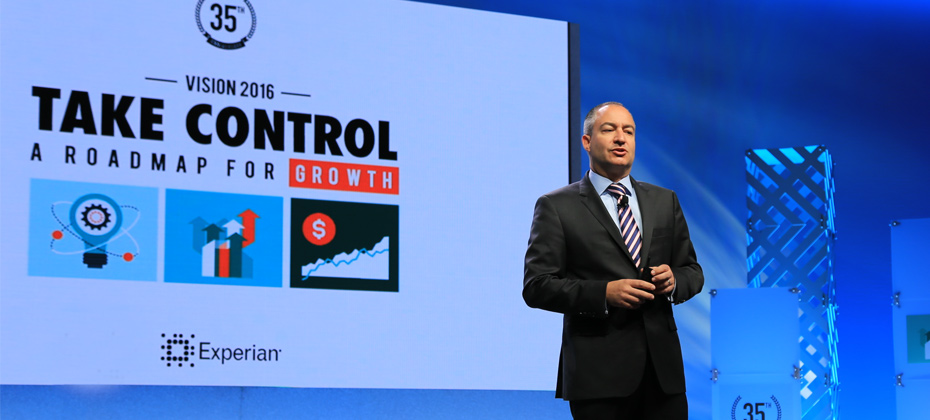Fintech
Fintech

In this age of content and increasing financial education available to all, most entities are familiar with credit bureaus, including Experian. They are known for housing enormous amounts of data, delivering credit scores and helping businesses decision on credit. On the consumer side, there are certainly myths about credit scores and the credit report. But myths exist among businesses as well, especially as it pertains to the topic of reporting credit data. How does it work? Who’s responsible? Does reporting matter if you’re a small lender? Let’s tackle three of the most common myths surrounding credit reporting and shine a light on how it really is essential in creating a healthy credit ecosystem. Myth No. 1: Reporting to one bureau is good enough. Well, reporting to one bureau is definitely better than reporting to none, but without reporting to all three bureaus, there could be gaps in a consumer’s profile. Why? When a lender pulls a consumer’s profile to evaluate it for extending additional credit, they ideally would like to see a borrower’s complete credit history. So, if one of their existing trades is not being reported to one bureau, and the lender makes a credit pull from a different bureau to use for evaluation purposes, no knowledge of that trade exists. In cases like these, credit grantors may offer credit to your customer, not knowing the customer already has an obligation to you. This may result in your customer getting over-extended and negatively impacting their ability to pay you. On the other side, in the cases of a thin-file consumer, not having that comprehensive snapshot of all trades could mean they continue to look “thin” to other lenders. The best thing you can do for a consumer is report to all three bureaus, making their profile as robust as it can be, so lenders have the insights they need to make informed credit offers and decisions. Some believe the bureaus are regional, meaning each covers a certain part of the country, but this is false. Each of the bureaus are national and lenders can report to any and all. Myth No. 2: Reporting credit data is hard. Yes, accurate and timely data reporting requires a few steps, but after you get familiar with Metro 2, the industry standard format for consumer data reporting, choose a strategy, and register for e-Oscar, the process is set. The key is to do some testing, and also ensure the data you pass is accurate. Myth No. 3: Reporting credit data is a responsibility for the big institutions –not smaller lenders and companies. For all lenders, credit bureau data is vitally important in making informed risk determinations for consumer and small business loans. Large financial institutions have been contributing to the ecosystem forever. Many smaller regional banks and credit unions have reported consistently as well. But just think how much stronger the consumer credit profile would be if all lenders, utility companies and telecom businesses reported? Then you would get a true, complete view into the credit universe, and consumers benefit by having the most comprehensive profile --- Bottom line is that when comprehensive data on consumer credit histories is readily available, it’s a good thing for consumers and lenders. And the truth is all businesses - big and small - can make this a reality.

Prescriptive solutions: Get the Rx for your right course of action By now, everyone is familiar with the phrase “big data” and what it means. As more and more data is generated, businesses need solutions to help analyze data, determine what it means and then assist in decisioning. In the past, solutions were limited to simply describing data by creating attributes for use in decisioning. Building on that, predictive analytics experts developed models to predict behavior, whether that was a risk model for repayment, a propensity model for opening a new account or a model for other purposes. The next evolution is prescriptive solutions, which go beyond describing or predicting behaviors. Prescriptive solutions can synthesize big data, analytics, business rules and strategies into an environment that provides businesses with an optimized workflow of suggested options to reach a final decision. Be prepared — developing prescriptive solutions is not simple. In order to fully harness the value of a prescriptive solution, you must include a series of minimum capabilities: Flexibility — The solution must provide users the ability to make quick changes to strategies to adjust to market forces, allowing an organization to pivot at will to grow the business. A system that lacks agility (for instance, one that relies heavily on IT resources) will not be able to realize the full value, as its recommendations will fall behind current market needs. Expertise — Deep knowledge and a detailed understanding of complex business objectives are necessary to link overall business goals to tactical strategies and decisions made about customers. Analytics — Both descriptive and predictive analytics will play a role here. For instance, the use of a layered score approach in decisioning — what we call dimensional decisioning — can provide significant insight into a target market or customer segment. Data — It is assumed that most businesses have more data than they know what to do with. While largely true, many organizations do not have the ability to access and manage that data for use in decision-making. Data quality is only important if you can actually make full use of it. Let’s elaborate on this last point. Although not intuitive, the data you use in the decision-making process should be the limiting factor for your decisions. By that, I mean that if you get the systems, analytics and strategy components of the equation right, your limitation in making decisions should be data-driven, and not a result of another part of the decision process. If your prescriptive environment is limited by gaps in flexibility, expertise or analytic capabilities, you are not going to be able to extract maximum value from your data. With greater ability to leverage your data — what I call “prescriptive capacity” — you will have the ability to take full advantage of the data you do have. Taking big data from its source through to the execution of a decision is where prescriptive solutions are most valuable. Ultimately, for a business to lead the market and gain a competitive advantage over its competitors — those that have not been able to translate data into meaningful decisions for their business — it takes a combination of the right capabilities and a deep understanding of how to optimize the ecosystem of big data, analytics, business rules and strategies to achieve success.

Tick-tock. Tick-tock. Lenders are just weeks away from the required Military Lending Act compliance date of Oct. 3, yet many are scrambling to find a solution. In fact, officials with CUNA and the American Bankers Association said they were still confused by the rules, and requested a six-month extension from the Department of Defense for compliance. Card holders have until Oct. 3, 2017 to comply, but others are trying to navigate what the rule means and how to introduce new practices to protect and serve military credit consumers. What are the top questions still circulating about this key piece of regulation? Here are a few we’ve been tracking, along with some responses to assist with this shift in compliance. 1. What types of accounts are covered under the Military Lending Act (MLA)? It initially applied to three narrowly-defined “consumer credit” products: Closed-end payday loans; Closed-end auto title loans; and Closed-end tax refund anticipation loans. The new rule, issued in 2015 by the Department of Defense, expands the definition of “consumer credit” covered by the regulation to more closely align with the definition of credit in the Truth in Lending Act and Regulation Z. This means MLA now covers a wide range of credit transactions. It does not apply to residential mortgages and credit secured by personal property, such as vehicle purchase loans. 2. Who are the covered borrowers under the MLA? The DMDC database identifies individuals who meet one of the following criteria: Is on active duty Regular or reserve member of the Army, Navy, Marine Corps, Air Force, or Coast Guard, serving on active duty under a call or order that does not specify a period of 30 days or less, or such a member serving on Active Guard and Reserve duty as that term is defined in 10 u.s.c. 101 (d)(6) The member’s spouse The member’s child defined in 38 USC 101(4), or An individual for whom the member provided more than one-half of the individual’s support for 180 days immediately preceding the extension of consumer credit covered by 32 C.F.R. Part 232 The flag returned from DMDC will not specifically identify the active duty military member, but it will flag if the applicant is a covered borrower. 3. How is MAPR calculated? What additional fees are included? The MAPR includes interest, fees, credit service charges, credit renewal charges, credit insurance premiums and other fees for credit-related products sold in connection with the loan. You should work with your legal/compliance teams for MLA restrictions and applicability. 4. What is the difference between the Servicemembers Civil Relief Act (SCRA) and the Military Lending Act (MLA)? Both regulations are designed to protect U.S. service members and their families, but each focus on different areas. SCRA has been around for decades and was designed to temporarily suspend judicial and administrative proceedings and transactions that may adversely affect service members during their actual military service. In fact, if a service member has a debt before he or she joined the active military service, they can have the interest rate reduced to 6 percent, upon request. If the loan is a mortgage, that rate can also be reduced for the duration the member is in the military, plus one year. Other loans are only reduced for the duration the member is on active duty. MLA, on the other hand, is focused solely on providing specific protections for active duty service members and their dependents in certain consumer credit transactions. It was introduced in 2007, but strengthened in 2015. Specifically, it limits APR to 36 percent on covered products, which was recently expanded to include closed-end payday loans, closed-end auto title loans and closed-end tax refund anticipation loans. Unlike SCRA, where the responsibility to activate these protections falls on the service member, MLA requires creditors to verify active duty status and dependents at origination. 5. Explain the difference between accessing MLA status directly versus indirectly. The Final Rule permits a creditor to use information obtained directly from the Department of Defense’s Database. Information can also be obtained from a nationwide consumer reporting agency to determine whether a consumer applicant is a covered borrower. When working with Experian, the one-stop solution will entail outputting the MLA indicator on the credit report at point of origination. We anticipate this solution will be available in fall 2016. --- Not much is known about what the punishments or fines will look like for infractions, but now is the time to start reviewing business governance and procedures that support compliance. To learn more about MLA and to access an on-demand webinar with industry experts, visit our site.

Consumers want to pay less. This is true in retail and in lending. No big surprise, right? So in order for lenders to capitalize and identify the right consumers for their respective portfolios, they need insights. Lenders want to better understand what rates consumers have. They want to know how much interest their customers pay. They want to know if consumers within their portfolio are at risk of leaving, and they want visibility into new prospects they can market to in an effort to grow. Luckily, lenders can look to trade level fields to be in the know. These inferred data fields, powered by Trended Data, allow lenders to offer products and terms that serve two purposes: First, their use in response models and offer alignment strategies drive better performance, ROI and life-time value. As noted earlier, consumers want to pay less, so if they are offered a better rate or money-saving offer, they’re more likely to respond. Second, they ultimately save consumers money in a way that benefits each consumer’s unique financial situation- overall savings on interest paid over the life of the loan, or consolidation of other debt often combined for a lower monthly payment. These trade level fields allow lenders to dig into various trends and insights surrounding consumers. For example, Experian data can identify big spenders and transactors (those who pay off their purchases every month). Research reveals these individuals love to be rewarded for how they use credit, demanding rewards, airline miles or other goodies for the spending they do. They also really like to be rewarded with higher credit lines, whether they use the increased line or not. Fail to serve these transactors in the right way and lenders could be faced with lackluster performance in the form poor response rates, booking rates, activation rates and early attrition. Thus, a little trade level insight can go a long way in helping lenders personalize products, offers and anticipate future financial needs. Knowing the profitability of a customer across all of their accounts is important, and accessing this intelligence in a seamless way is ideal. The data exists. For lenders, it’s just a matter of unlocking it, making those small, but meaningful changes and keeping a pulse on the portfolio. Together, these strategies can help lenders keep their best customers and acquire new ones that stick around longer.

The pendulum has swung again. The great recession brought a glacial freeze to access to capital. The thaw brought rapid, frictionless underwriting with an almost obsessive focus on growth and customer experience. Enter Marketplace Lenders and their more “flexible” approach to credit risk assessment. While much good has come from this evolution in financing, new challenges have surfaced – especially as it pertains to fraud prevention and credit risk management. Stacking has emerged as a particularly knotty problem in the small business lending space. Applicants have the opportunity to apply for and be approved for multiple loans in a matter of days or even hours. Technology allows for underwriting that is at least somewhat automated and depositing often occurs within hours of approval. The speed of fulfillment is a boon for small businesses. However, it also makes it possible to be approved and draw down funds on multiple loans in quick succession. Core underwriting metrics, such as debt-to-income ratios and cashflow, are unreliable in the face of ratcheting debt from concurrent online business loans. This situation occurs because the window between the approval of the loan and delivery of the funds is much shorter than the timeframe to report the loan to credit reporting agencies and other third-party data suppliers. Not all lenders report small business loans, further compounding the problem. Lenders’ risk and pricing strategies are hamstrung in the face of stacking, whether intentional on the part of the small business or not. If a struggling small business applies for credit and receives multiple loan offers, should we rely on their ability to resist the temptation to accept them all and use the funds wisely? No. The burden rests squarely on the credit provider to proactively address the problem. Technology-enabled frictionless underwriting underpins the online consumer loan space and facilitates a similar, yet subtly different stacking problem. There are a large number of loan providers, with a spectrum of risk appetites and pricing strategies. This all but ensures that a consumer has access to additional loans at an ever-increasing interest rate. The underlying assumption, among the more mainstream, lower-rate providers, is that the consumer is disclosing all of their obligations – including any recent loans. Although reporting in the consumer space is more robust and timely, it is still possible for an applicant to quickly access and draw funds on several loans within a very short timeframe, making it difficult for loan providers to get a full and complete picture of their capacity to repay the loan. The situation is further complicated by lenders at the higher risk, higher rate end of the market whose business models are structured to allow for, and perhaps even encourage, stacking by the consumer. Fortunately, there are a number of steps lenders can take to improve the situation: Contribute credit data to the credit reporting agencies. Know your customer, their industry, their market and underwrite appropriately. Develop a tailored underwriting approach that achieves a balance between frictionless customer experience and prudent credit and risk assessment. All applicants are not equal, and some require additional scrutiny and more time to underwrite. Understand the drivers and indicators of stacking. The latter point is worth emphasizing. The time to address stacking is prior to funding. This requires the lender to anticipate, identify and pre-empt stackers. There is no 100 percent foolproof remedy. However, lenders can stack (pun-intended) the odds in their favor. For example, if an existing loan has a high balance and is delinquent, might that be an indicator of a propensity to stack? What if the business owner has applied for multiple loans, resulting in multiple inquiries, over a 45-day period? A proactive, data-driven anti-stacking strategy can yield positive results, reducing delinquency and losses. In combination with consistent comprehensive reporting to the bureaus, it can go a long way toward reducing the risk posed by this largely invisible threat.

Congress recently took several actions signaling a growing interest in regulatory issues surrounding the Fintech sector. This growing attention follows a number of recent inquiries by federal and state regulators into the business practices in the industry. Subcommittee takes a deep dive into Fintech and OML regulatory landscape In July, the House Subcommittee on Financial Institutions and Consumer Credit held a hearing entitled Examining the Opportunities and Challenges with Financial Technology (“Fintech”). Witnesses and lawmakers voiced optimism that online marketplace lending can help to expand access to capital for consumers and small businesses, but the hearing also focused on a growing schism as to whether new regulations or changes to the underlying framework is necessary to ensure consumers are protected. Some lawmakers and the witness from the American Banking Association expressed concerns that the Fintech and marketplace lenders may benefit from being outside of the supervisory scope of prudential regulators and the Consumer Financial Protection Bureau (CFPB). Witnesses from the marketplace lending industry argued that they are obligated to meet all of the same regulatory compliance requirements as traditional lenders. Rep. McHenry introduces package of Fintech bills aimed at spurring innovation In addition, Congressman Patrick McHenry (R-NC), a member of the House Republican Leadership team and the Vice Chairman of the House Financial Services Committee, introduced two bills this month aimed at spurring innovation in the Fintech industry. H.R. 5724, the Protecting Consumers’ Access to Credit Act of 2016, would clarify that federal law preempts a loan’s interest rate as valid when made. The bill is in response to the Supreme Court’s recent decision not to hear Madden v Midland, a case in which the Second Circuit court ruled that the National Bank Act does not have a preemptive effect after the national bank has sold or otherwise assigned the loan to another party. The reading of this law has created uncertainty for Fintech companies and the banks that partner with them. H.R. 5725, the IRS Data Verification Modernization Act of 2016, requires the IRS to automate the Income Verification Express Service process by creating an Application Programming Interface (API). The legislation is aimed at speeding up and improving the automation of the loan application process. In particular, it is aimed at streamlining the process by which lenders gain access to tax transcript data. Currently, lenders may require applicants to fill out IRS form “4506-T,” which gives the lender the right to access a summarized version of their tax transcript as part of the process to confirm certain data points on their application. According to industry reports, this manual process at the IRS takes two to eight days, creating unnecessary delays for Fintech companies and banks that rely on leveraging data and technology to make faster, informed decision for consumer and small business lending Both bills have been referred to the House Financial Services Committee for review.

All customers are not created equally – at least when it comes to one’s ability to pay. Incomes differ, financial circumstances vary and economic challenges surface. Lost job. Totaled car. Unplanned medical bills. Life happens. Research conducted by a recent Bankrate study revealed just 38 percent of Americans said they could cover an unexpected emergency room visit or a $500 car repair with available cash in a checking or savings account. It’s a scary situation for individuals, and also a source of stress for the lender expecting payment. So what are the natural moments for a lender to assess “ability to pay?” Moment No. 1: When prepping for a prescreen campaign and at origination. Many lenders leverage an income estimation model, designed to give an indication of the customer’s capacity to take on additional debt by providing an estimation of their annual income. Within the model, multiple attributes are used to calculate the income, including: Number of accounts Account balances Utilization Average number of months since trade opened Combined, all of these insights determine a customer’s current obligations, as well as an estimation of their current income, to see if they can realistically take on more credit. The right models and criteria on the front-end – whether used when a consumer applies for new credit or when a lender is executing a prescreen campaign to acquire new customers – minimizes the risk for default. It’s a no-brainer. Moment No. 2: When a customer is already on your books. As the Bankrate study mentioned, sudden life events can send some customers’ lives into a financial tailspin. On the other hand, financial circumstances can change for the better too. Aggressively paying down a HELOC, doubling down on a mortgage, or wiping out a bankcard balance could signal an opportunity to extend more credit, while the reverse could be the first signs of payment stress. Attaching triggers to accounts can give lenders indications on what to do with either scenario, helping to grow a portfolio and protect it. Moment No. 3: When an account goes south. While a lender hates to think any of its accounts will plummet into collections, sometimes, it’s inevitable. Even prime customers fall behind, and suddenly financial institutions are faced with looking at collections strategies. Where should they place their bets? You can’t treat all delinquent customer equally and work the accounts the same way. Collection resources can be wasted on customers who are difficult or impossible to recover, so it’s best to turn to predictive analytics and a collections scoring strategy to prioritize efforts. Again, who has the greatest ability to pay? Then place your manpower on those individuals where you can recover the most dollars. --- Assessing one’s ability to pay is a cornerstone to the financial services business. The quest is to find the sweet spot with a combination of application data, behavioral data and credit risk scoring analytics.

His car, more than 10 years old and not worth salvaging, was in the shop again. Time to invest in something new – or at least “new-ish.” He headed to a local dealership, selected a practical model and applied for financing. “We can’t give you a loan,” said the manager. “Your income is not high enough, but perhaps if you bring in a co-signer ...” Denied. Her college degree hung on the wall of her childhood bedroom. In the months since she celebrated graduation with family and friends, she landed a job, but not one providing enough income to cover rent, a car payment and her hefty student loan payments. “I didn’t realize my payments would be so high,” said the woman. “I don’t know how I’ll ever climb out from under this debt and start my life.” Stalled. His attempt at applying for a bankcard, much needed to begin the journey of establishing credit in the country, was met with failure. “We can’t find any credit history on you,” says the lender. “Try again in the future.” Invisible. These stories are all too common in America. A lack of financial education, coupled with a few poor choices, can derail an individual’s financial trajectory. More light has certainly been shone on the topic of financial education and the importance of making smart credit decisions from a young age, but there is no nationwide financial education program offered in schools, and many parents feel ill-equipped to handle the task. Consider a few of these numbers: 71 percent of college grads recently surveyed by Experian said they did not learn about credit and debt management in college, giving their schools an average grade of “C” when it comes to preparing them to manage credit and debt after college The latest "State of Credit" revealed the average debt per consumer is $29,093 39 percent of newlyweds say credit scores is a source of stress in their marriage Money management is tough, and we expect people to just figure it out. But clearly, that’s not working. So we need to think about the world of credit differently. As Experian says, we need to treat it as a skill. We need to practice and learn and adjust. As you get better at credit, it opens doors, creates opportunities, and enables people to live the lives they wish to live. Suddenly, you can get the car loan, move out, have access to credit cards, and manage it all responsibly. In other words, you claim financial health. On the other hand, if you don’t work at this skill, a lack of financial health ensues. Unruly amounts of debt, irregular income and sporadic savings create stress, resentment and pain. Increasingly, more financial institutions are boosting efforts to educate about credit. Schools are exploring curriculum to talk finances and inject real-life money management scenarios into everyday lessons. Millennials are seeking transparency around credit transactions. The more financially healthy consumers we have in this country, building credit skills, means overall economies will grow. So yes, financial health matters. It matters to individuals, to lending institutions, to retailers and to communities big and small. Building those credit skills is essential. Your health depends on it.

What you give, you get. At least that is what popular philosophers claim. And if you think about it, this statement is also applicable to the world of data accuracy. As organizations of all sizes increasingly rely on data to interact with customers and create insights to drive strategy, it’s no secret bad data can quickly lead a company or financial institution down the wrong path, even landing them into regulatory troubles. A recent Experian Data Quality study found: Seventy-five percent of organizations believe inaccurate data is undermining their ability to provide an excellent customer experience. Sixty-five percent of organizations wait until there are specific issues with their data before they address and fix them. Fifty-six percent of organizations believe mistakes can be attributed to human error. For years, organizations have wanted good data simply for operational efficiencies and cost savings, but now a shift has taken place where businesses are using data for nearly every aspect of their organization. The majority of sales decisions are expected to be driven by customer data by 2020, with companies determined to turn data into actionable insight to find new customers, increase customer retention, better understand their needs, and increase the value of each customer. Additionally, the Fair Credit Reporting Act (FCRA) requires those contributing data to provide accurate and complete information to the credit reporting agencies. If they fail to meet accuracy obligations when reporting negative account histories to credit reporting companies, the result could be bureau action and fines. Organizations still deal with a high degree of inaccurate data because there are a number of challenges to maintaining it. Some of them are external forces, but many are internal challenges – most notably a reliance on reactive data management strategies. The biggest problem organizations face around data management today actually comes from within. Businesses get in their own way by refusing to create a culture around data and not prioritizing the proper funding and staffing for data management. Many businesses know they need to improve their data quality, but often have a hard time defining why an investment is needed in the current structure. Solutions exist to get in front of data accuracy challenges. DataArc 360 Powered by Experian Pandora, for example, is designed to check the consumer credit information provided by data furnishers prior to submission to credit bureaus. This allows data suppliers to take more of a proactive approach to ensuring the accuracy of information, that may result in fewer credit disputes and a more positive interaction between consumers and their credit. Creating a clear governance plan, and centralizing data management policies and policies can also clean up internal challenges and improve accuracy standards. The importance of data cannot be neglected, but again, the data has to be clean for it to matter. What you give is what you’ll get.

Experian consultant offers his recap from attending a half-day event hosted at The White House called the “FinTech Summit” largely focused on how government agencies can tap into the innovation, in which new firms are offering small-business owners and consumers faster forms of loans and digital payments. Federal regulators have been studying the industry to determine how it can be regulated while still encouraging innovation.

Part four in our series on Insights from Vision 2016 fraud and identity track It was a true honor to present alongside Experian fraud consultant Chris Danese and Barbara Simcox of Turnkey Risk Solutions in the synthetic and first-party fraud session at Vision 2016. Chris and Barbara, two individuals who have been fighting fraud for more than 25 years, kicked off the session with their definition of first-party versus third-party fraud trends and shared an actual case study of a first-party fraud scheme. The combination of the qualitative case study overlaid with quantitative data mining and link analysis debunked many myths surrounding the identification of first-party fraud and emphasized best practices for confidently differentiating first-party, first-pay-default and synthetic fraud schemes. Following these two passionate fraud fighters was a bit intimidating, but I was excited to discuss the different attributes included in first-party fraud models and how they can be impacted by the types of data going into the specific model. There were two big “takeaways” from this session for me and many others in the room. First, it is essential to use the correct analytical tools to find and manage true first-party fraud risk successfully. Using a credit score to identify true fraud risk categorically underperforms. BustOut ScoreSM or other fraud risk scores have a much higher ability to assess true fraud risk. Second is the need to for a uniform first-party fraud bust-out definition so information can be better shared. By the end of the session, I was struck by how much diversity there is among institutions and their approach to combating fraud. From capturing losses to working cases, the approaches were as unique as the individuals in attendance This session was both educational and inspirational. I am optimistic about the future and look forward to seeing how our clients continue to fight first-party fraud.

James W. Paulsen, Chief Investment Strategist for Wells Capital Management, kicked off the second day of Experian’s Vision 2016, sharing his perspective on the state of the economy and what the future holds for consumers and businesses alike. Paulsen joked this has been “the most successful, disappointing recovery we’ve ever had.” While media and lenders project fear for a coming recession, Paulsen stated it is important to note we are in the 8th year of recovery in the U.S., the third longest in U.S. history, with all signs pointing to this recovery extending for years to come. Based on his indicators – leverage, restored household strength, housing, capital spending and better global growth – there is still capacity to grow. He places recession risk at 20 to 25 percent – and only quotes those numbers due the length of the recovery thus far. “What is the fascination with crisis policies when there is no crisis,” asks Paulsen. “I think we have a good chance of being in the longest recovery in U.S. history.” Other noteworthy topics of the day: Fraud prevention Fraud prevention continues to be a hot topic at this year’s conference. Whether it’s looking at current fraud challenges, such as call-center fraud, or looking to future-proof an organization’s fraud prevention techniques, the need for flexible and innovative strategies is clear. With fraudsters being quick, and regularly ahead of the technology fighting them, the need to easily implement new tools is fundamental for you to protect your businesses and customers. More on Regulatory The Military Lending Act has been enhanced over the past year to strengthen protections for military consumers, and lenders must be ready to meet updated regulations by fall 2016. With 1.46 million active personnel in the U.S., all lenders are working to update processes and documentation associated with how they serve this audience. Alternative Data What is it? How can it be used? And most importantly, can this data predict a consumer’s credit worthiness? Experian is an advocate for getting more entities to report different types of credit data including utility payments, mobile phone data, rental payments and cable payments. Additionally, alternative data can be sourced from prepaid data, liquid assets, full file public records, DDA data, bill payment, check cashing, education data, payroll data and subscription data. Collectively, lenders desire to assess someone’s stability, ability to pay and willingness to repay. If alternative data can answer those questions, it should be considered in order to score more of the U.S. population. Financial Health The Center for Financial Services Innovation revealed insights into the state of American’s financial health. According to a study they conducted, 57 percent of Americans are not financially healthy, which equates to about 138 million people. As they continue to place more metrics around defining financial health, the center has landed on four components: how people plan, spend, save and borrow. And if you think income is a primary factor, think again. One-third of Americans making more than $60k a year are not healthy, while one-third making less than $60k a year are healthy. --- Final Vision 2016 breakouts, as well as a keynote from entertainer Jay Leno, will be delivered on Wednesday.

It’s impossible to capture all of the insights and learnings of 36 breakout sessions and several keynote addresses in one post, but let’s summarize a few of the highlights from the first day of Vision 2016. 1. Who better to speak about the state of our country, specifically some of the threats we are facing than Leon Panetta, former Secretary of Defense and Director of the CIA. While we are at a critical crossroads in the United States, there is room for optimism and his hope that we can be an America in Renaissance. 2. Alex Lintner, Experian President of Consumer Information Services, conveyed how the consumer world has evolved, in large part due to technology: 67 percent of consumers made purchases across multiple channels in the last six months. More than 88M U.S. consumers use their smartphone to do some form of banking. 68 percent of Millennials believe within five years the way we access money will be totally different. 3. Peter Renton of Lend Academy spoke on the future of Online Marketplace Lending, revealing: Banks are recognizing that this industry provides them with a great opportunity and many are partnering with Online Marketplace Lenders to enter the space. Millennials are not the largest consumers in this space today, but they will be in the future. Sustained growth will be key for this industry. The largest platforms have everything they need in place to endure – even through an economic downturn.In other words, Online Marketplace Lenders are here to stay. 4. Tom King, Experian’s Chief Information Security Officer, addressed the crowds on how the world of information security is growing increasingly complex. There are 1.9 million records compromised every day, and sadly that number is expected to rise. What can businesses do? “We need to make it easier to make the bad guys go somewhere else,” says King. 5. Look at how the housing market has changed from just a few years ago: Inventory continues to be extraordinarily lean. Why? New home building continues to run at recession levels. And, 8.5 percent of homeowners are still underwater on their mortgage, preventing them from placing it on the market. In the world of single-family home originations, 2016 projections show that there will be more purchases, less refinancing and less volume. We may see further growth in HELOC’s. With a dwindling number of mortgages benefiting from refinancing, and with rising interest rates, a HELOC may potentially be the cheapest and easiest way to tap equity. 6. As organizations balance business needs with increasing fraud threats, the important thing to remember is that the customer experience will trump everything else. Top fraud threats in 2015 included: Card Not Present (CNP) First Party Fraud/Synthetic ID Application Fraud Mobile Payment/Deposit Fraud Cross-Channel FraudSo what do the experts believe is essential to fraud prevention in the future? Big Data with smart analytics. 7. The need for Identity Relationship Management can be seen by the dichotomy of “99 percent of companies think having a clear picture of their customers is important for their business; yet only 24 percent actually think they achieve this ideal.” Connecting identities throughout the customer lifecycle is critical to bridging this gap. 8. New technologies continue to bring new challenges to fraud prevention. We’ve seen that post-EMV fraud is moving “upstream” as fraudsters: Apply for new credit cards using stolen ID’s. Provision stolen cards into mobile wallet. Gain access to accounts to make purchases.Then, fraudsters are open to use these new cards everywhere. 9. Several speakers addressed the ever-changing regulatory environment. The Telephone Consumer Protection Act (TCPA) litigation is up 30 percent since the last year. Regulators are increasingly taking notice of Online Marketplace Lenders. It’s critical to consider regulatory requirements when building risk models and implementing business policies. 10. Hispanics and Millennials are a force to be reckoned with, so pay attention: Millennials will be 81 million strong by 2036, and Hispanics are projected to be 133 million strong by 2050. Significant factors for home purchase likelihood for both groups include VantageScore® credit score, age, student debt, credit card debt, auto loans, income, marital status and housing prices. More great insights from Vision coming your way tomorrow!

Four Experian employees reflect on financial lessons and challenges learned during their time served in the military. Pedro Martinez, based at Camp Lejeune in North Carolina, was earning a monthly salary of just $680 as a Private First Class for the Marine Corps. in 1988. Winter was nearing, and since he was living off base, he needed a heater. “I was able to purchase one with ‘easy credit’ for $15 per month, for 18 months,” said Martinez, now living in Costa Rica. “I ended up paying a lot more than driving to Kmart and getting one there if I had the money. But for the purchase I was able to make at the time, I had to finance it, and I remember the interest rate was almost 40 percent.” Fast forward decades later, and Martinez recalls those same “easy credits” and payday loans surround local bases. Advance paycheck services offering rates of 30 percent and beyond for brief, 15-day cycles abound. While military base consumer advisors can encourage personnel to steer clear, more formal protections have been lacking. Until now. “The Military Lending Act is definitely a great measure to assure a fair consumer treatment, regulate high-interest rates, and safeguard families from going bankrupt,” said Martinez. No one can tell the stories of military life better than those who have lived it. They understand the training, sacrifices, day-to-day grind as well as the experiences of managing life on base and far from home. Financial education is lacking among all consumer groups in the country, and it is easy for a few credit mishaps to take individuals to a place where they soon find themselves struggling to get out of debt and obtain affordable credit. “I witnessed countless friends in the military finance furniture, receive cash advances and take out loans on their cars, which ultimately hurt them financially,” said Marshall Abercrombie, who served five years as a Navy Corpsman with the Marines. “Unfortunately, there are more title loans, cash advance and furniture leasing companies found within military towns compared to legitimate financial institutions. So, when you combine word-of-mouth, inexperience and easy access you end up with necessary legislature like the Military Lending Act.” Abercrombie, who currently resides in the southeast, claims his first “solo” experience with a financial institution saved him from falling down a bad path. “I can remember gripping my diploma thinking ‘now what am I going to do with all this money I’m about to start making?’” said Abercrombie. “Fortunate for me I was immediately greeted by a very eager representative of Armed Forces Bank. Despite being only 19 years old, looking back it’s apparent how much opportunity someone like me represented to a bank given I now had a government job that required I set up auto-deposit for future paychecks.” Especially for those military members sent overseas, opportunities and challenges can be unique. Michael Kilander, now a Southern California resident, was deployed overseas in Germany in the early 90s with his wife and ran into trouble with a large U.S. bank. “We had a credit card that we fell a month behind in paying,” says Kilander. “We had the money each time but did not receive the statement/ bill until a week after the due date. The military mail system took a great deal of time, particularly if you lived off base in the local Germany economy, as we did. We asked if the bank could mail the bill a little earlier, but they refused and were uninterested in the challenges of the APO system. Consequently we had to keep track of the amount spend on the card and estimate the likely charges and pay before we received the bill. We switched cards a few months later.” Raymond Reed, who enlisted with the Navy out of high school, was luckily advised by his parents to join a military credit union. “I did not realize I needed credit, and assumed credit was only offered to those with savings,” said Reed. “During my Navy tour, I joined a military credit union and since I did not have standard expenses, other than car insurance, which was covered by my paychecks. At the end of my tour, I saved and paid cash for my motorcycle, as I was accustomed to since I had a nice savings established.” The stories of stresses and opportunities surrounding military and credit are diverse and widespread, but the positive news is updated regulations will add increased protections. Learn more about the Servicemembers Civil Relief Act and now enhanced Military Lending Act to understand the varying protections, as well as discover how financial institutions can comply and best support military credit consumers and their families.

Television had its Twilight Zone, the Emmy-winning anthology series featuring tales rich in fantasy, morality and irony. Today's economy has its own Twilight Zone. It lies between the legitimate economy with its weekly paychecks, W2 forms and 401(K) plans, and the underground economy with its unreported, all-cash transactions. Call them "The Unbanked." Call them "The Credit Invisibles." Whatever label you choose, these men and women -- who number in the millions - want access to credit, but can’t be easily accessed with traditional credit models, and they lack a smooth on-ramp to grow in the credit universe. How a Worker Becomes "Credit Invisible" America's "credit invisibles" tend to be minimum- or low-wage workers. They exist in virtually every industry, although they tend to be concentrated in agriculture, food service, construction and manufacturing. Some work full-time for a single employer, while others work part-time or on a gig-by-gig basis. The FDIC estimates some 10 million Americans currently fit the definition of unbanked, while an additional 28.4 million are underbanked. Instead of traditional banks, this population tends to use the services of private check-cashing services and payday lenders for their financial services, which is not always advantageous for the consumer with these services’ sizeable expenses and transaction fees. The Payroll Card Alternative Recognizing the perils inherent in the current system, a number of companies have developed solutions to help those individuals who cannot and will not establish traditional checking and savings accounts. SOLE® Financial, a financial services company headquartered in Portland, Ore, offers the SOLE Visa® Payroll Card, allowing employees to enjoy the benefits associated with direct deposit checking accounts without the costs and restrictions traditional banks often impose. "From a payroll standpoint, paycards function just like bank accounts,” explained Taylor Ellsworth, content marketing manager for SOLE Financial. “The transfer happens on the exact same timeline as the paychecks that employers deposit to traditional bank accounts.” Additionally, any bill from a vendor that accepts electronic payments - either online or with a card number over the phone - can accept payments from the SOLE paycard. "For bills like rent, which sometimes can only be paid with a check or money order, cardholders can log in and use the bill pay option for $1 per bill to have a check issued to their landlord -- or any other recipient -- from their account,” said Ellsworth. Helping Credit Invisibles Build Personal Credit Files Another way companies are helping credit invisibles become visible is by considering non-retail payments, such as payments to utility companies, as part of a personal payment history. Traditionally payments to gas, electric, telephone, cable and other household service providers are generally not being reported unless the consumer is severely delinquent and thus on-time payment history is not included in credit scores. Experian recently investigated how including payments to energy utilities could affect men and women with "thin-file" credit portfolios. The subprime and nonprime consumers in the study received the greatest positive score impact, with 95 percent of subprime consumers and 75 percent of nonprime consumers experiencing a positive score change. A resounding 82 percent of subprime consumers in the study received a positive score impact of 11 points or more. The average VantageScore® credit score change for all participants was an increase of 28 points. Experian concluded, "positive energy-utility reporting presents an opportunity for energy companies to play a key role in helping their consumers build credit history. The ability for many of these consumers to become credit-scoreable, build a more robust credit file and potentially migrate to a better risk segment simply by paying their energy bills on time each month is powerful and represents an opportunity for positive change that should be not overlooked." Conclusion With income inequality growing, there is an increasing pressure to find ways to improve the prospects of the tens of millions of Americans who live on the farthest edges of the American economy. New technologies and ways of looking at credit can offer the unbanked and the under-banked ways to improve their economic situation and move closer to the mainstream. By bringing these millions into the light, those who issue and evaluate credit will create millions of new customers who can, in turn, add new energy to the American economy.